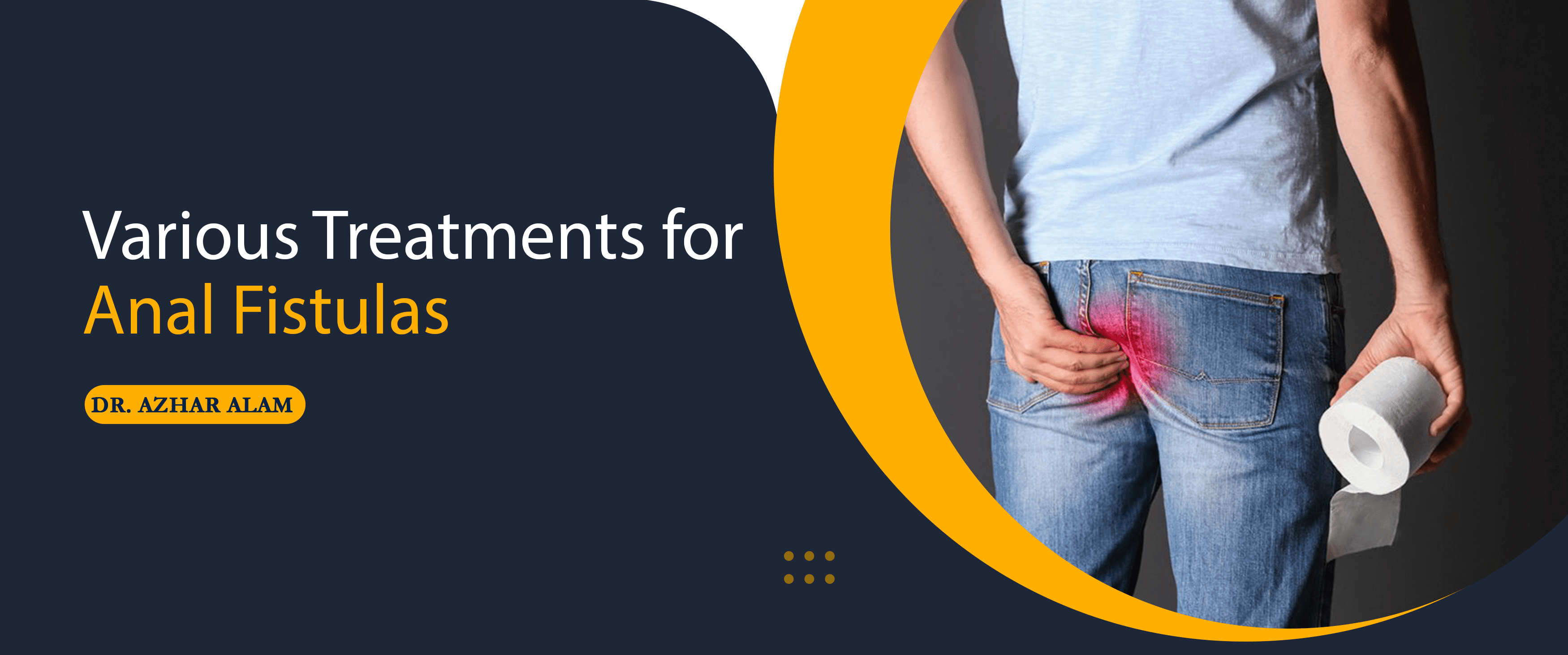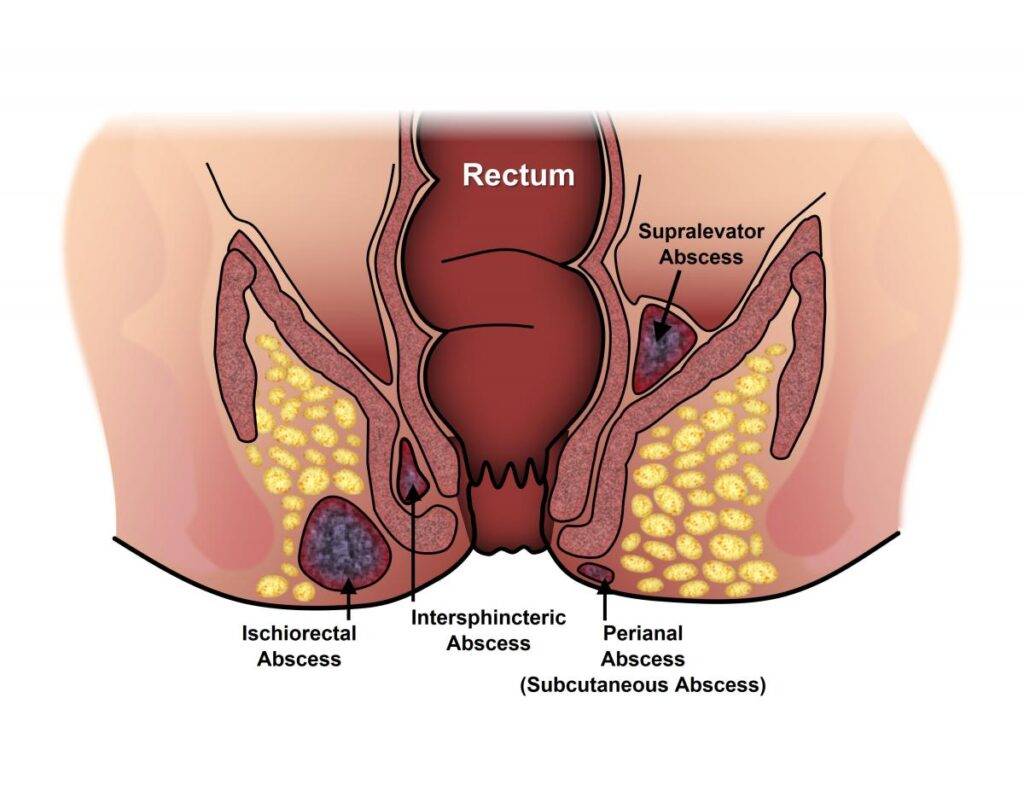

Various Treatments for Anal Fistulas
A fistula is an unnatural connection between two organs such as blood vessels or tissues. Fistulas can result as an abscess i.e. the pus-filled pocket inside the body. The abscess may be continuously full of body fluids such as stool or urine and prevent healing. The abscess eventually breaks through the skin, an organ, or body cavity and then forms a fistula. In this article, we will be understanding the Different Treatments for an Anal Fistula.
It’s difficult for a person to manage a fistula by medications alone as well as surgery for fistulas is an effective way to address an unusual connection. In the following article, we will attempt to comprehend one of the more popular kinds of fistulas, the anal fistula. This article will provide you with everything you need to learn about anal fistula: its causes, types of diagnostic tests, and the time when you might require surgery to treat anal fistula.
What exactly is Anal Fistula?
An anal fistula may be defined as the abnormal gap between the skin on the outside of the buttocks and anal canal. The type of fistula usually formed when an abscess burst or spurs up before the treatment. It can also happen if the abscess isn’t completely healed.
An anal fistula begins in the anal glands, which are situated between the external and the internal openings of the anus. It flows into the anal artery. If the drain of the anal glands becomes blocked, it may result in the development of an abscess. This may spread to the skin’s surface in the end.
Also Read: Symptoms, Causes And Treatment Of Piles
Different types of Anal Fistula
Based on where it’s in the body Anal fistulas can be classified into four kinds. They are classified as follows:
- The Intersphincteric Fistula: It is the intersphincteric fistula is an abnormal tract that begins between the external and internal muscles of the sphincter and concludes in the anterior region.
- The Transphincteric Fistula: The Transphincteric Fistula is commonly referred to in the form of the horseshoe fistula. It is the inflamedand abnormal tract that runs across the external sphincter and opens up inside the anus region.
- The Suprasphincteric Fistula: The Suprasphincteric Fistula is an abnormal tract that begins at the junction of the external and external space of the muscle. It connects to the puborectalis muscles and extends outside of the anus.
- The Extrasphincteric Fistula: The Extrasphincteric Fistula is defined as the abnormal tract that starts in the rectum. It passes through the puborectalis muscles and opens up at the anus. The fistula can be caused by an appendiceal abscess i.e. Crohn’s disease.
Signs and Symptoms of Anal Fistula

It is possible to consult the doctor and undergo surgery for anal fistula If you experience the following symptoms, which are common.
- Anus has a foul smell
- Pain that grows chronically in the area of the anal and gets worse when walking, sitting, or even coughing.
- Painful bowel movement
- Rectal bleeding
- The skin is red and itchy in the area of the anal
- It is a fever that is accompanied by chills
- Fatigue and fatigue
Also Read: Basics Of Anal Fistula
Diagnostic and Testing
To treat fistulas, the doctor determines an examination to determine the patient’s symptoms as well as medical history. They then perform an examination for physical or rectal.
Physical examinations are conducted to find the fistula’s opening as well as the tenderness and discharge of pus around the area of the anal. Typically the doctor will press the fistula with a gentle pressure, and then determines its tenderness, and then examines for bleeding blood. Although the external opening from an anal fistula may be identified easily but it is difficult to locate an internal opening. In this case, the doctor may suggest a rectal examination.
Rectal examinations are when medical professionals insert a glove-covered, gel-lubricated finger inside the rectum of the patient in order to identify the location affected by infection. They also determine the length of the fistula, and how the sphincter muscles are working.
Beyond these ways of diagnosing doctors may require further examinations to establish the most appropriate procedure for treating fistulas. They include:
- Proctoscopy is a procedure in which the doctor utilizes a specially-designed telescope with a lamp to look through the rectum. A proctoscopy can be described as an operation to treat fistulas that is usually performed with general anesthesia.
- Anal endosonography is also known as ultrasound. This is a secure procedure where the doctor employs high-frequency sound waves to record images below the surface of the anal canal.
- A Magnetic Resonance Imaging (MRI) scan might be required to identify complicated, recurring fistulae. The MRI scan makes use of powerful radio waves that generate a precise image of the organ infected.
- The term “CT scan” refers to a Computerized Tomography or CT scan that uses X-rays in conjunction with computers to produce precise cross-sectional pictures of the body of the patient. CT scans also assist in determining the extent of inflammation.
the Different Treatments for an Anal Fistula
The treatment options for anal fistula depend on the extent and complexity of the sphincter muscle. As there aren’t many options for treatment, doctors usually opt for surgical procedures to treat fistulas like
- Fistulotomy: This is the most commonly used and efficient fistula surgery procedure that involves the doctor opening and then drains the fistula anal.
- The Seton Technique: In this procedure doctors insert an extremely thin surgical thread into the fistula’s tract. This allows the fistula to be drained and then heal.
- Achieving the Flap Procedure: In the event that the fistula goes through anal sphincter muscle the doctor could do this procedure. The doctor will cover the fistula’s opening to allow it to heal.
- The Fibrin Method of Glue: Also referred to as also known as the Collagen Plug procedure, this is a non-surgical treatment that aids in treating anal fistula. The doctor injects a special glue during the time that the patient is asleep. It seals up the fistula, and aids in healing.
Conclusion: We have already discussed the types and different Treatments for an Anal Fistula. An anal fistula does not cause any harm however it can trigger some discomfort. There is also the possibility of irritation from the draining of pus. Additionally, abscesses that recur frequently can result in significant morbidity over an extended period of time due to the discomfort. They can also be a sign of the beginning of an infection that is systemic. Therefore, if you begin to notice symptoms, you must consult your physician immediately and get anal fistula treatment. If, as mentioned earlier, the infection is very severe and you are suffering from it, you might need to undergo a fistula procedure. Following the recovery from fistula surgery must be taken all the precautions necessary to avoid the return. The best way to prevent it is to maintain a fiber-rich diet and drink plenty of fluids. It is also important to be careful not to strain when passing stool and be active regularly. It also aids in keeping the area of the abdomen dry.
Contact the Fistula Doctor in Kolkata for the Fistula Treatment.
About Docor

Dr. Azhar Alam
MBBS (Honours), MRCS A (UK),
DNB General Surgery
FIAGES (Gastro Intestinal Surgery)
FMAS (Minimal Access Surgery),
MNAMS (New Delhi)
Consultant Gastrointestinal, Advanced Laparoscopic and Laser Surgeon
Assistant Professor of Surgery, KPC Medical College and Hospital




